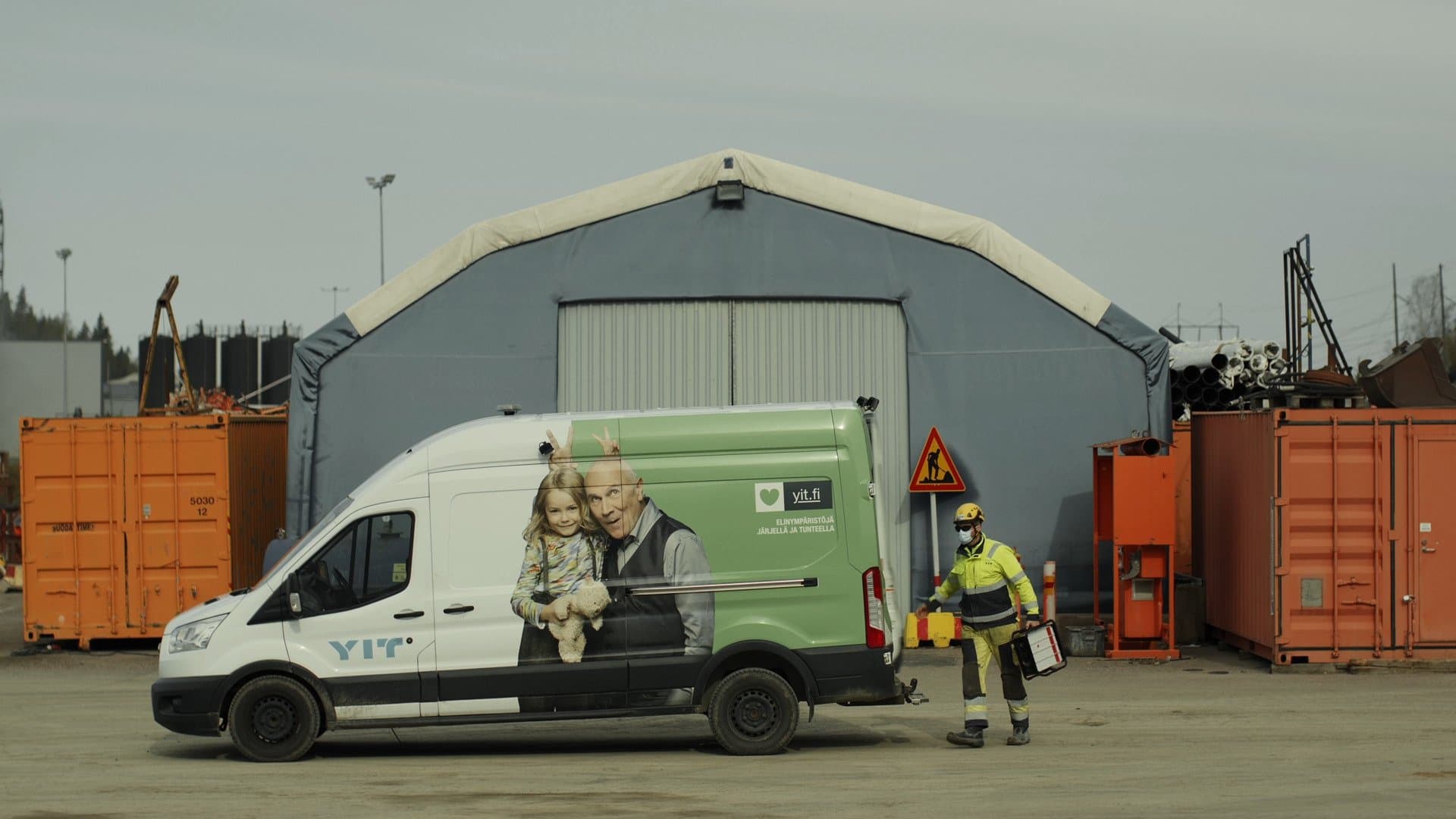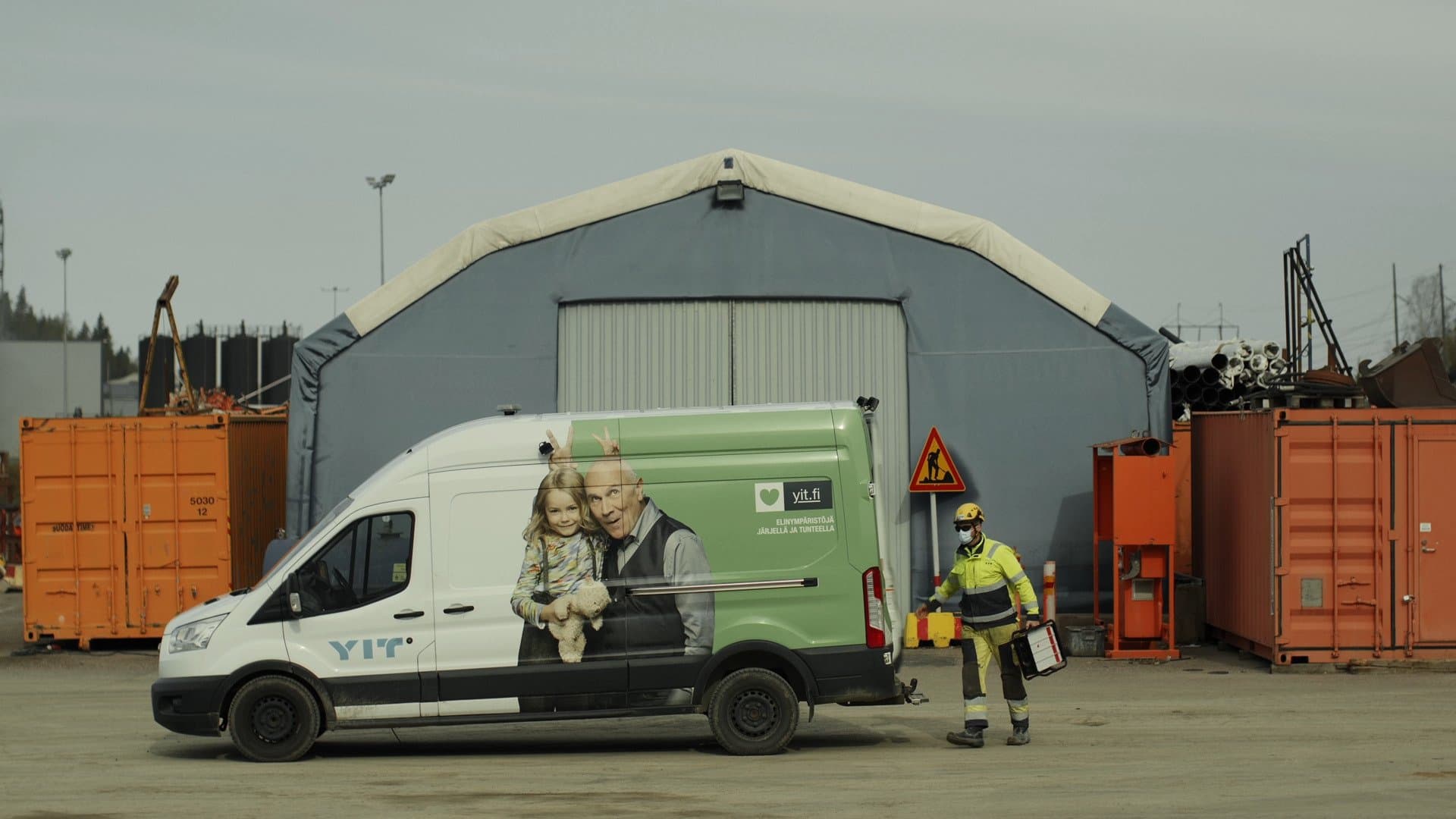When it comes to fighting climate change, even small acts can make a difference. Case in point: the service vehicle department at YIT, Finland’s largest development and construction company. They are putting measures into place that will help them meet YIT’s goal of becoming a zero-emissions operator, with the intermediary step of halving their emissions by the year 2030.
YIT Service vehicle powered with instagrid ONE max
For starters, YIT’s service vehicle department is working to rely less and less on combustion engines and generators. According to Ville Tulkki, YIT Fleet Manager, the company will eventually eliminate their reliance on combustion engines all together. “I foresee,” he says, “that in the future all our machines will run on electricity or hydrogen, in one wayor another.”
The problem with combustion engines and power sources is that they burn fuels like propane, liquid and natural gas that emit large amounts of carbon into the atmosphere. They also require a lot of maintenance; you have to monitor them constantly and replace parts frequently. One measure YIT is taking to eliminate their output of carbon and improve efficiency is that they are gradually replacing combustion engine machinery, like pile drivers and drill rigs.
Another step they have taken is to turn to companies like instagrid to test and implement battery-sourced power. YIT has done this as part of instagrid’s Clean Air Project, funded by the EU Life program. With the Clean Air Project, instagrid is testing out portable, zero-emission batteries on large-scale projects with twelve construction companies in seven EU countries (Germany, Austria, Belgium, Netherlands, Sweden, Poland, and Finland). The goal is to replace 30,000 fuel generators currently on the market by the end of 2022. In Finland, YIT has been testing instagrid’s ONE max system on various projects.
YIT’s service vehicle department, for instance, has been testing out instagrid ONE max in their daily operations. Workers load it in their vans and take it with them to the various job sites where they need to work that day. They use instagrid ONE max to power such tools as welding machines and angle grinders. So far, so good, observes Ville, “The experience that we’ve had with the instagrid devices so far is that they’ve lasted very nicely through the duration of a job.”
YIT’s service vehicle department has also discovered that instagrid ONE max does more than prevent local emissions; it also eliminates other issues related to using combustion generators on job sites. For one, it’s highly portable and cordless. It weighs a mere 20 kg and can be easily loaded into a van and driven right up to the site where a power source is needed. Also, because it doesn’t have to be plugged in, workers no longer have to worry about potentially severing the long cable lines that combustion generators require. And unlike combustion generators, which are loud and emit exhaust gases, instagrid ONE max runs silently and without fumes of any sort. In short, YIT has found that instagrid ONE max has both reduced local emissions and improved work conditions for members of their service vehicle department.
YIT’s participation in instagrid’s EU Life program is only one component of the company’s larger sustainability strategy. Committed to the Science Based Target initiative (SBTi) as part of the Paris Climate Accords, they are working to limit the rise of the earth’s temperature by no more than 1.5° Celsius. To do this, they are actively reviewing and improving their own practices and supporting measures and organizations that also work to combat climate change and respect the environment. Internally, YIT requires their product development planners to take the potential carbon footprint into account and on self-developed sites they have an automated carbon footprint calculation. To fight the shadow economy, corruption, and abuse of state laws and environmental regulations, they also have a program called the YIT Ethics Channel which provides support for suppliers, customers, and YIT employees to report on possible violations. In addition to these measures, YIT is also building a company-wide sustainability reporting system that will measure and monitor their practices, finding ways to reduce their carbon emissions.
instagrid and YIT are working together to combat climate change — in ways small and large.
Why is instagrid ONE Max ideal for use in service vans?
High peak power – suitable to power all kinds of equipment
instagrid ONE max has continuous power of 3600W and peak power of 18000W. This means you can power any 230V equipment it. Because every job and every site has different demands, service vans needs that sort of flexibility.
Lightweight – convenient to carry to any location
instagrid ONE max is highly portable. It weighs a mere 20kg. This makes it easier for service van operators to carry out their work, since they might not be able to park right next to where they need a power source.
Produces ZERO local emissions – supports sustainability goals
Unlike traditional combustion generators, instagrid makes it possible to use renewable energy sources.
Read White Paper on portable batteries Read more about instagrid ONE max

